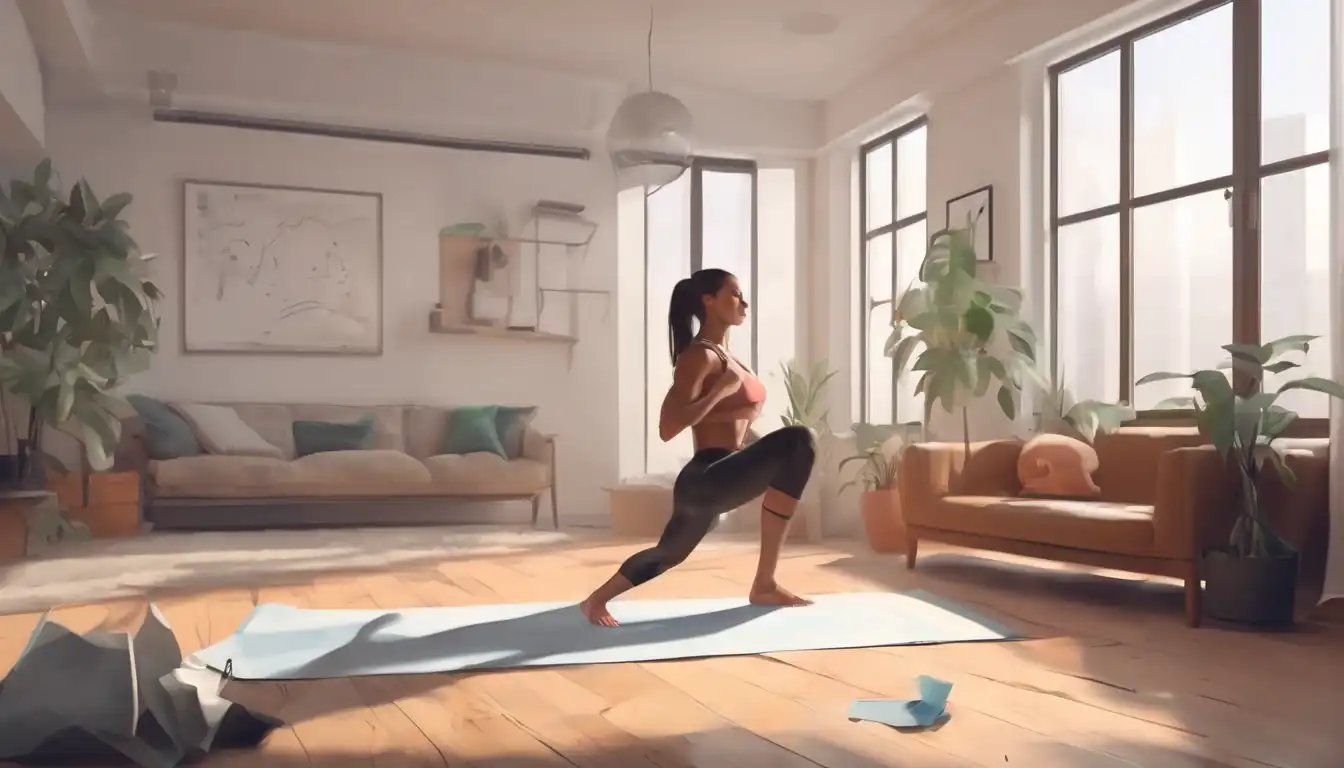Transform Your Fitness Journey with Zero Equipment
In today's fast-paced world, finding time to visit the gym can be challenging. However, the lack of equipment or gym membership shouldn't prevent you from achieving your fitness goals. Effective home workouts with no equipment needed offer a practical solution that fits into any schedule and budget. These bodyweight exercises leverage your own weight as resistance, making them accessible to beginners and challenging enough for advanced fitness enthusiasts.
The beauty of no-equipment workouts lies in their versatility and convenience. Whether you're in a small apartment, hotel room, or backyard, you can perform these exercises anywhere. Research shows that consistent bodyweight training can improve strength, endurance, flexibility, and cardiovascular health just as effectively as traditional gym workouts.
Essential Bodyweight Exercises for Full-Body Conditioning
Push-Ups: The Ultimate Upper Body Builder
Push-ups remain one of the most effective upper body exercises you can perform without equipment. They target your chest, shoulders, triceps, and core muscles simultaneously. Start with knee push-ups if you're a beginner, gradually progressing to standard push-ups and more advanced variations like decline or diamond push-ups. Aim for 3 sets of 10-15 repetitions, focusing on proper form rather than speed.
Squats: Foundation for Lower Body Strength
Bodyweight squats form the cornerstone of lower body training. They engage your quadriceps, hamstrings, glutes, and calves while improving mobility and balance. Ensure your knees track over your toes and your back remains straight throughout the movement. For added intensity, incorporate jump squats or pistol squats as you advance.
Planks: Core Stability and Endurance
The plank exercise develops exceptional core strength and stability. Hold the position for 30-60 seconds, maintaining a straight line from head to heels. Variations like side planks, plank jacks, or mountain climbers can target different muscle groups and prevent workout monotony.
Creating Effective Workout Routines
Structure your no-equipment workouts using circuit training principles for maximum efficiency. A typical session might include:
- 5-minute dynamic warm-up (jumping jacks, high knees, arm circles)
- Circuit 1: Push-ups, squats, planks (3 rounds)
- Circuit 2: Lunges, tricep dips, bicycle crunches (3 rounds)
- 5-minute cool-down with stretching
This approach keeps your heart rate elevated while working different muscle groups, creating an effective cardiovascular and strength training combination. For best results, aim to workout 3-5 times per week, allowing adequate recovery between sessions.
Progressive Overload Without Weights
One common concern with bodyweight training is how to continue making progress without adding external weight. The solution lies in implementing progressive overload through:
- Increasing repetitions or sets gradually
- Reducing rest periods between exercises
- Incorporating more challenging variations
- Slowing down movements to increase time under tension
- Adding isometric holds at the most difficult points
For example, as standard push-ups become easier, transition to decline push-ups or one-arm push-ups. Similarly, progress from regular squats to jump squats or single-leg squats. This systematic approach ensures continuous improvement and prevents fitness plateaus.
Nutrition and Recovery Considerations
While equipment-free workouts are highly effective, proper nutrition and recovery remain crucial components of any fitness program. Ensure you're consuming adequate protein to support muscle repair and complex carbohydrates for energy. Hydration plays a vital role in performance and recovery, so drink water throughout the day.
Rest days are equally important as workout days. Your muscles need time to repair and grow stronger. Consider active recovery activities like walking, yoga, or light stretching on your off days. Quality sleep (7-9 hours nightly) significantly impacts your workout results and overall health.
Adapting Workouts for Different Fitness Levels
Beginner-Friendly Modifications
If you're new to exercise, start with simplified versions of each movement. Wall push-ups, assisted squats using a chair, and knee planks provide excellent starting points. Focus on mastering proper form before increasing intensity. Consistency matters more than intensity when beginning your fitness journey.
Advanced Challenges for Experienced Exercisers
For those with more experience, incorporate plyometric movements like burpees, jump lunges, and mountain climbers. Isometric holds at the most challenging points of each exercise increase time under tension. Supersets (performing two exercises back-to-back without rest) and decreasing rest periods between sets maintain intensity without equipment.
Common Mistakes to Avoid
Even without equipment, proper form remains paramount to prevent injury and maximize results. Avoid these common pitfalls:
- Rushing through repetitions without full range of motion
- Holding your breath during exercises
- Neglecting proper warm-up and cool-down routines
- Focusing only on favorite exercises instead of balanced training
- Ignoring pain or discomfort that indicates improper form
Listen to your body and prioritize quality movements over quantity. If you experience joint pain or unusual discomfort, modify the exercise or consult a fitness professional.
Long-Term Sustainability and Motivation
The greatest advantage of no-equipment workouts is their sustainability. Since they require minimal time and no financial investment, you're more likely to maintain consistency. Track your progress through workout journals or fitness apps to stay motivated. Celebrate small victories like completing more repetitions or holding a plank longer.
Variety prevents boredom and ensures comprehensive fitness development. Rotate between different workout formats: some days focus on strength, others on endurance or flexibility. Incorporate fun elements like dance workouts or outdoor activities to keep your routine engaging.
Remember that fitness is a journey, not a destination. The convenience of equipment-free exercises means you can maintain your routine through busy schedules, travel, or changing life circumstances. This accessibility makes bodyweight training one of the most practical approaches to lifelong fitness.
For more home fitness inspiration, explore our guide on beginner bodyweight exercises or discover how to create an effective home gym space without expensive equipment.
